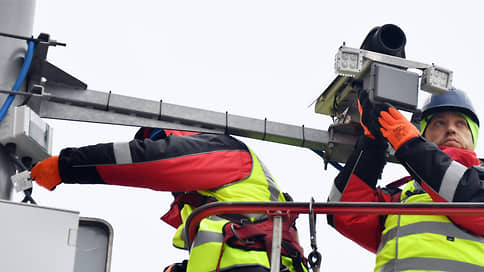The fleet of traffic cameras increased by 8% over the year, and the number of fines increased by 20%
[ad_1]

The fleet of traffic cameras in 2023 reached almost 30 thousand units, and the number of fines issued with their help exceeded 220 million. This follows from the data of the Ministry of Internal Affairs provided to Kommersant. The volume of automatic “letters of happiness” generated by the traffic police increased by 20% over the year. The leaders in penalties against drivers are Moscow and the Moscow region – a third of all violations in Russia are recorded on the territory of these regions.
Data on administrative practice in 2023, at the request of Kommersant, was provided by the press center of the Russian Ministry of Internal Affairs. It follows from the report that State Traffic Inspectorate employees issued a total of 237.6 million decisions on administrative offenses in the field of traffic, which is 18.1% more than a year earlier. Of these, 214.2 million were completed, or 90.1% (in 2022 it was 88.6%).
92% of decisions (220.9 million; +20.4% compared to last year) were issued using traffic cameras – the proportion is comparable to the figures for 2022 (91%). The total number of photo and video recording systems on the roads increased by 8.4% – now there are 29.2 thousand: 25.2 thousand of them are stationary (+9.8%), 900 are mobile (+6.3%) and 3 .1 thousand – mobile (-1.2%). As Kommersant previously reported, the trend of reducing the number of cameras on tripods has been observed since 2021.
Traffic police squads of the State Traffic Safety Inspectorate stopped 19.2 million offenses during traffic control (+6.3% year-on-year). Including 496.4 thousand cases of driving by drivers with signs of intoxication (-7.2%) were identified. 278.3 thousand cases (-7.9%) were initiated for driving while intoxicated (parts 1 and 3 of Article 12.8 of the Code of Administrative Offenses); for refusal to undergo a medical examination (Article 12.26 of the Administrative Code) – 163.4 thousand cases (-4.8%).
The leaders in the number of decisions issued against drivers are Moscow (41.4 million) and the Moscow region (39.9 million). Then follow by a wide margin St. Petersburg and the Leningrad region (13.9 million), Tatarstan (8.31 million), Bashkortostan (6.79 million), Krasnodar region (5.73 million), Samara region (5.26 million) ), Novosibirsk region (4.89 million), Krasnoyarsk Territory (3.82 million), Dagestan (3.51 million). We are talking about the total number of decisions issued using cameras and traffic surveillance.
The Federal Bailiff Service (FSSP), based on the traffic police materials, initiated 21.7 million enforcement proceedings, which is 7.5% less than in 2022 (then there were 26.3 million).
20.8 million decisions have been fully or partially implemented, the service told Kommersant. “As a result of the work carried out, almost 15 billion rubles were collected,” said the FSSP. “The enforcement of administrative fines by the traffic police, taking into account the two-year statute of limitations for their execution, amounted to 74.3%.”
The department recalled that, according to amendments to the law on enforcement proceedings, which came into force in 2023, some “procedural decisions” based on materials from the traffic police are already made automatically with the help of artificial intelligence. “If, say, 100 thousand fines are received per day, the machine automatically initiates enforcement proceedings, automatically sends requests to banks, upon receiving a positive response from the bank, automatically generates a payment document and, after signature, sends it to the banks for foreclosure,” he previously said about how this mechanism works, FSSP Director Dmitry Aristov. “After collection, if the amount of collection corresponds to the amount of the debt, it automatically issues a resolution to end the enforcement proceedings and remove all restrictions.”
“It is obvious that currently the increase in the number of recorded violations is not so much due to the increase in the number of cameras, but due to the expansion of the number of controlled violations,” states Grigory Shukhman, an expert on photo-video recording systems for violations. “An increasing number of regions are introducing control of the use of seat belts and telephones by drivers. At the same time, the assessment of these compositions is very subjective, so it is difficult to appeal the fines. An increase in the number of recordings must lead to an increase in the number of officials examining materials from cameras, otherwise the volume of errors leading to the punishment of innocent people will increase.”
The fleet of cameras is growing proportionally slower than the number of fines issued with their help, notes the coordinator of the Blue Buckets movement, Petr Shkumatov: “This is due to the fact that the cameras are becoming more and more smart, they can work on several offenses at once,” explains the expert . Let us remind you that the capital’s data center recently began, in pilot mode, to monitor cars passing through tram stops in violation (“Kommersant” reported about this). “I wouldn’t be surprised if after some time the number of complexes stabilizes, and the number of resolutions continues to grow,” predicts Pyotr Shkumatov. According to his calculations, on average there are now five fines per car per year, and one camera is used to issue 20 “chain letters” per day.
[ad_2]
Source link








